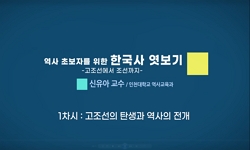高麗時代는 統一新羅時代의 문화를 계승하고 귀족적이며 화려한 미술 양식을 이루었다. 고려의 서예를 연구함에 있어 금석문은 중요한 자료로써 사료되며 高麗 고유의 서풍을 정립하는데 ...
http://chineseinput.net/에서 pinyin(병음)방식으로 중국어를 변환할 수 있습니다.
변환된 중국어를 복사하여 사용하시면 됩니다.
- 中文 을 입력하시려면 zhongwen을 입력하시고 space를누르시면됩니다.
- 北京 을 입력하시려면 beijing을 입력하시고 space를 누르시면 됩니다.
https://www.riss.kr/link?id=T13732081
- 저자
-
발행사항
수원 : 경기대학교 미술디자인대학원, 2015
-
학위논문사항
학위논문(석사) -- 경기대학교 미술디자인대학원 , 서예ㆍ문자예술전공 , 2015. 2
-
발행연도
2015
-
작성언어
한국어
- 주제어
-
발행국(도시)
경기도
-
형태사항
68 ; 26 cm
-
일반주기명
지도교수: 장지훈
- 소장기관
-
0
상세조회 -
0
다운로드
부가정보
국문 초록 (Abstract)
高麗時代는 統一新羅時代의 문화를 계승하고 귀족적이며 화려한 미술 양식을 이루었다. 고려의 서예를 연구함에 있어 금석문은 중요한 자료로써 사료되며 高麗 고유의 서풍을 정립하는데 크게 기여하기 때문에 그 가치는 매우 크다. 이에 본고는 高麗時代 石碑에 새겨진 碑額의 종류와 자형분석에 대한 고찰을 하였다.
高麗時代는 太祖부터 불교문화가 융성하여 塔碑 건립이 활발하던 시기로 塔碑에 새겨진 碑額 또한 많은 변화를 가져오게 된다. 高麗 初期에는 장방형보다는 정방형의 小篆 필획과 결구가 사용되고, 장법은 갸름한 직사각형의 題額양식이 유행하였다. 세로기록양식의 제액양식이 統一新羅와 서로 같지만 서체나 각법의 사용에 있어서는 매우 자유분방한 시기였고 세부표현에서 국세의 강성과 번영을 반영하는 웅장하고 정교한 기법을 확인 할 수 있다.
高麗 中期로 넘어오면서 주로 장방형의 자형이 주를 이루게 되는데 제액식 두전과 두전이 함께 유행하고, 刻法과 서체는 소전음각이 가장 많이 사용되었으며, 소전양각이나. 해서가 사용된 예도 있었다. 또 이 시기에는 기존의 전통양식이 해체되며 화려하고 파격적인 면모를 과시하고 있는데 편액의 변죽에 사용된 문양이 화려하게 나타나는 시기였음을 알 수 있다.
高麗時代 後期 명필로 많은 명작을 남겼지만 다시 고전적인 중국석비의 영향이 나타나고 전대의 독자성을 회복하지 못하여 양식 · 형식 · 서체 등이 다양하지 못한 쇠퇴기에 접어들게 된다. 13세기부터는 중기에 이어 장방형의 자형이 주를 이루며 제액과 두전, 그리고 제액식두전이 함께 사용 되었지만 말기에 이르면 제액과 제액식두전 보다는 두전 양식이 지배적이었고 이 두전 양식은 朝鮮時代까지로 이어지게 된다. 하지만 정치적, 경제적으로 풍요롭지 못한 高麗時代 後期의 상황으로 문화와 예술이 발전하지 못하여 석비와 제액의 양과 질이 모두 절하되는 양상을 볼 수 있었다.
이상과 같이 高麗時代는 대외적으로 중국과의 교류로 통해 중국의 문화를 수용하면서도 무조건적 모방을 하지 않고 高麗의 정서에 맞게 재구성하여 고려시대 碑額의 서체에 반영하였음이 특징이라 할 것이다. 단순히 명찰개념의 碑額이 아닌 당시 서예가들의 문화 정체성을 간직해 온 보고라고 평가할 수 있으며 이러한 점에서 高麗時代 碑額의 가치는 크다고 할 수 있다.
다국어 초록 (Multilingual Abstract)
Having inherited the culture of Unified Silla period, Koryo dynasty achieved noble and glamorous artistic format. Epigraphs during the Koryo dynasty are important materials for studying caligraphy and have extensive values for they contributed to cre...
Having inherited the culture of Unified Silla period, Koryo dynasty achieved noble and glamorous artistic format. Epigraphs during the Koryo dynasty are important materials for studying caligraphy and have extensive values for they contributed to create unique styles. This thesis studies the types of epigraphs used on stone monuments and analyzes shapes of characters.
Koryo dynasty enjoyed thriving buddhist culture from the first king, and many towers and monuments were built in the period which brought changes in epigraph use on towers and monuments. In the early Koryo, rather than rectangular form, square form Xiaozhuan stroke and structure were used. For composition, thin rectangle shaped inscribing format was in fashion. The vertical recording form, and inscribing format is the same with that of Unified Silla, but the calligraphic style or inscribing method had much more freedom that immense and exquisite techniques which reflects the state's strong and thriving state can be seen in detailed expressions.
Turning to mid Koryo period, the rectangular character became the main stream along with Head-Zuanzi-Inscription and Head-Zuanzi. For inscribing method and calligraphic style, Xiaozhuan-Engravement was mostly used, but Xiaozhuan-Raised Carving or Kaishu can also be seen. In this period, the traditional forms were disintegrated and showed fancy and extreme side which can be observed from the fancy patterns used on edges of the frame.
However, in the late Koryo, although there still were many master pieces, the reappearance of traditional Chinese stone monument influence and lack of uniqueness from the previous era created mundane repetitions of format, forms, and style, which led down to declining period. From the 13th century, with continued mid Koryo period, rectangular character became the main fashion along with inscription, Head-Zuanzi, and Head-Zuanzi-Inscription used together. Then in the later period, Head-Zuanzi format was in dominance than inscription or Head-Zuanzi-inscription, and this Head-Zuanzi format continued through Josun dynasty. However, because of the late Koryo's poor political, and economical stability, its art and culture could not grow further, and resulted in declining amount and quality of stone monuments and inscriptions.
Through cultural exchanges with China, Koryo accepted and restructured Chinese culture to fit the sentiments of Koryo people and applied them on epigraphic calligraphy style. These epigraphs are not just a labeling-concept but a storing reports of calligraphers' cultural identity - and for that, the value of Koryo's epigraphy is prodigious.
목차 (Table of Contents)
- Ⅰ. 序論 1
- Ⅱ. 碑의 形成과 變貌過程 4
- 1. 中國 碑의 흐름 4
- 2. 韓國 碑의 흐름 11
- Ⅰ. 序論 1
- Ⅱ. 碑의 形成과 變貌過程 4
- 1. 中國 碑의 흐름 4
- 2. 韓國 碑의 흐름 11
- Ⅲ. 高麗時代 初期의 碑額 19
- 1. 碑額의 樣式 19
- 2. 書體의 特徵 25
- Ⅳ. 高麗時代 中期의 碑額 32
- 1. 碑額의 樣式 32
- 2. 書體의 特徵 38
- Ⅴ. 高麗時代 後期의 碑額 43
- 1. 碑額의 樣式 43
- 2. 書體의 特徵 47
- Ⅵ. 結論 53
- 參考文獻 56
- ABSTRACT 59












